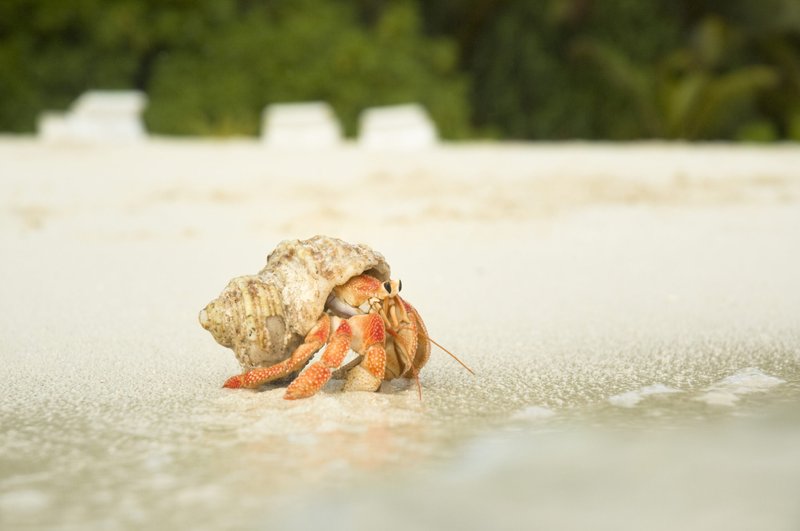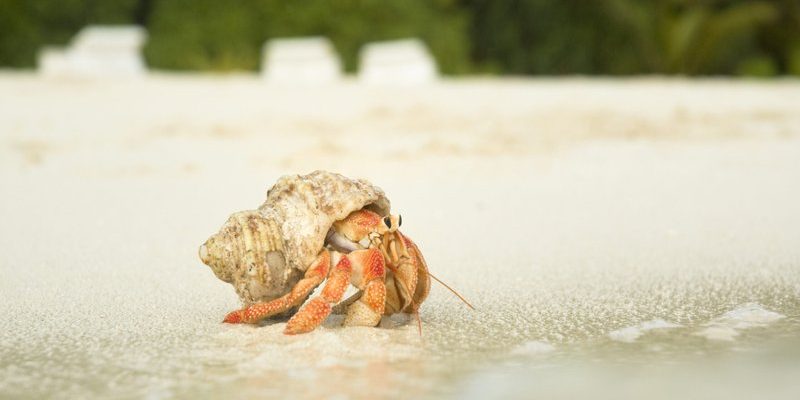
Imagine living in a home that’s slowly being taken over by the ocean. For hermit crabs, this is not just a metaphor—it’s a reality. They depend on their coastal habitats for survival, and as those habitats change, so does their future. Let’s dive deeper into how climate change impacts these fascinating little creatures.
Understanding Hermit Crabs and Their Role in the Ecosystem
Hermit crabs are not your typical crabs; they don’t have a hard shell. Instead, they live in empty shells that they find, which they switch out as they grow. This unique lifestyle plays a crucial role in marine ecosystems. Hermit crabs help break down detritus in their habitats, recycling nutrients back into the environment. They also serve as a food source for various birds, fish, and other marine life.
You might be wondering, what does climate change have to do with all this? Well, when the temperatures rise or the oceans become more acidic, it can disrupt their habitat. For instance, warmer water can lead to bleached coral reefs, which are vital for many marine species. Without healthy reefs, hermit crabs lose part of their habitat, which can severely impact their populations.
Rising Sea Levels and Habitat Loss
One of the most significant effects of climate change is rising sea levels. As glaciers melt and seawater expands, coastal habitats are threatened. For hermit crabs, this means losing the sandy shores they call home. Coastal areas are not just places to hang out; they are critical for breeding and accessing the food they need.
Consider a hermit crab on the beach, searching for snacks among the seaweed. With rising tides consuming their habitat, these crabs might have to venture further inland, which can expose them to risks like predators and traffic. Moreover, as their homes flood, hermit crabs have fewer places to hide and breed, making survival more challenging.
Temperature Changes and Their Effects on Behavior
Temperature changes do more than just affect where hermit crabs live; they also influence their behavior. Crabs are ectothermic, meaning their body temperature depends on their environment. If water temperatures rise too high, hermit crabs can become stressed or even die.
In warmer conditions, you might notice them becoming more active during the day, when they typically hide from the sun. This shift can lead to overexposure, leading to dehydration. Higher temperatures can also disrupt their feeding patterns, as they might struggle to find food sources that thrive in a changing climate.
The Impact of Ocean Acidification
Ocean acidification, a less talked-about effect of climate change, deserves attention too. As carbon dioxide levels rise, oceans absorb more of this gas, leading to increased acidity. This can have devastating effects on marine life, including hermit crabs.
You see, hermit crabs rely on calcium to build their shells. When oceans become more acidic, it becomes harder for these crabs to find the right materials. This can lead to thinner, weaker shells, making them more vulnerable to predators and less likely to survive. So, it’s not just about the behavior but also fundamental aspects of their survival that are at stake.
Food Sources and Ecosystem Imbalance
Climate change also disrupts the food chain, which can severely impact hermit crabs. With changing ocean conditions, the availability of algae and detritus—their primary food sources—can fluctuate. If their food disappears, hermit crabs will need to adapt quickly or face starvation.
Imagine trying to find a meal when your favorite restaurant suddenly closes. That’s what it’s like for hermit crabs when their food sources dwindle. Without enough to eat, they may not grow strong enough to reproduce. This could lead to a decline in hermit crab populations, ultimately affecting the entire coastal ecosystem.
Conservation Efforts and What We Can Do
So, what can be done to help hermit crabs in this challenging climate? Conservation efforts are crucial. Protecting coastal habitats through marine protected areas can help provide safe spaces for these creatures. Reducing pollution and controlling coastal development are essential steps to safeguard their homes.
You can also help by being mindful of your actions. Simple steps like reducing plastic waste and supporting clean-up initiatives can make a big difference. Every little action counts. When we prioritize the health of our oceans, we make it easier for hermit crabs and endless other marine life to thrive.
Climate change may feel like an overwhelming challenge, but it’s essential to remember that we all have a role to play. Hermit crabs are a small part of the larger puzzle, yet their struggles reflect the bigger picture of our changing world. By raising awareness and supporting conservation efforts, we can help these remarkable creatures adapt to the ongoing challenges they face.
As we enjoy our beautiful beaches and coastal ecosystems, let’s not forget the tiny residents like hermit crabs that contribute to the balance of life. Together, we can create a future where hermit crabs continue to thrive alongside us, navigating the tricky changes of our warming planet.

